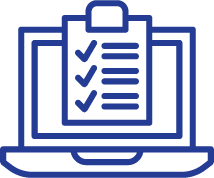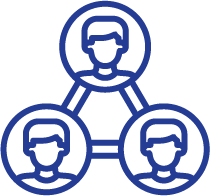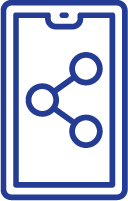United App
The Prompt
A design team consisting of three colleagues and myself were tasked with conducting a usability study of an established mobile app. After selecting the United app, we conducted three mobile guerrilla tests each. The 12 participant’s video recordings were then analyzed individually, and synthesized into a report along side recommendations on how to best improve the application’s design.
Project Background
Study Goals
The goal of this study was to assess the effectiveness, efficiency, and satisfaction (or lack thereof) that users experience while interacting with the United Airlines mobile application.
Participants
12 individual target users were recruited for the study; four males and eight females. Their ages ranged from 19 to 67 years old, with the mean age of 34 years old.
Methodology
The study utilized a summative research approach, and was conducted in person with a moderator. Each test recorded audio and video for data analysis and future research.
Example Task
The following is one of the tasks participants conducted for the study
The objective of this task is to determine the functionality and effectiveness of the application for users attempting to book a flight— one of the primary functions of the United Airlines application.
“You and your best friend would like to go visit another long time friend who resides in St. Louis. Using the United Airlines app, begin the process by booking a first class, round trip flight from the airport closest to you, to St. Louis, Missouri, for Friday through Sunday of the second weekend of this December. Choose your specific flight times based on your own preference.”
Task Flow
Results — The Fare Page
Problem
Departure vs Return
Seven of 12 participants were confused upon advancing to the Returning Flight Fare Page. They were unsure as to why the app brought them to what appeared to be the same screen they just left.
“Im not even sure what I’m looking at now … did I go backwards?”
“I feel like I [already] did this..”
Recommendation
Although the Fare page already distinguishes which specific flight users are shopping for (by stating X to Y airport on the header of the page), the majority of users missed this information.
It could prove more effective to add verbiage, such as “Select Your Return Flight,” and making the information larger and/or more centralized on the screen, in an attempt to better inform the user of where they are currently located in the flight purchasing flow.
Problem
Information Architecture
An additional five of the 12 participants mentioned their confusion about the layout of the Fare Page. Many mentioned they felt the page was excessively cluttered.
“This screen in particular really confused me.”
Recommendation
The page needs a considerable amount of information architecture redesign. Some recommendations are removing the overlay of fare comparison with class/price information, relocating less important text to other pages, and making the method of flow advancement (currently by choosing a price) more recognizable to users.
Results — The Seat Map Page
Problem
Attempting to Advance Flow
Many users expected to advance the purchasing flow by entering the Flight Details page. Each participant then proceeded by tapping the Seat Map link.
Many struggled to comprehend why they could no longer advance past the Seat Map page before deciding to tap back twice to return to Fare page.
Three participants attempted to select their seats when viewing the seat map screen; a screen intended to only show what seat choices are available.
Not one participant noticed the Legend button near the top left of the screen.
“I don’t know how to choose a seat.”
Recommendation
Alert the user that this seating map page is only for viewing open seats, and they will have the ability to choose their actual seats later in the flow.
Add a subtle animation to the Legend button when users open the page to alert them of its utility.
Problem
Orientation & Zoom Gestures
Four participants mentioned and/or gestured difficulties viewing the Seat Map page. Two participants attempted to pinch zoom out, while another two turned their phone horizontally in an effort to change the screen orientation.
“I really don’t like this seat map, they should make it vertical so it goes with the screen … oh good it’s not rotating … this is kind of tedious, I can’t zoom out either.”
Recommendation
Allowing users to manipulate the scale and orientation of the seating map will give them the opportunity to comfortably view their seat choices based on their own preferences.
Participant’s gestures and behavior suggest they were hoping for zoom and orientation capabilities
Lessons Learned
Guerrilla mobile testing is an efficient and cost effective method for conducting usability tests, lending itself the opportunity to improve a product’s usability in efficient time at an affordable price.
As spoken language sometimes proves to be unreliable, a participant’s physical behavior offers valuable insight toward’s their honest desires, frustrations, and overall experience.







